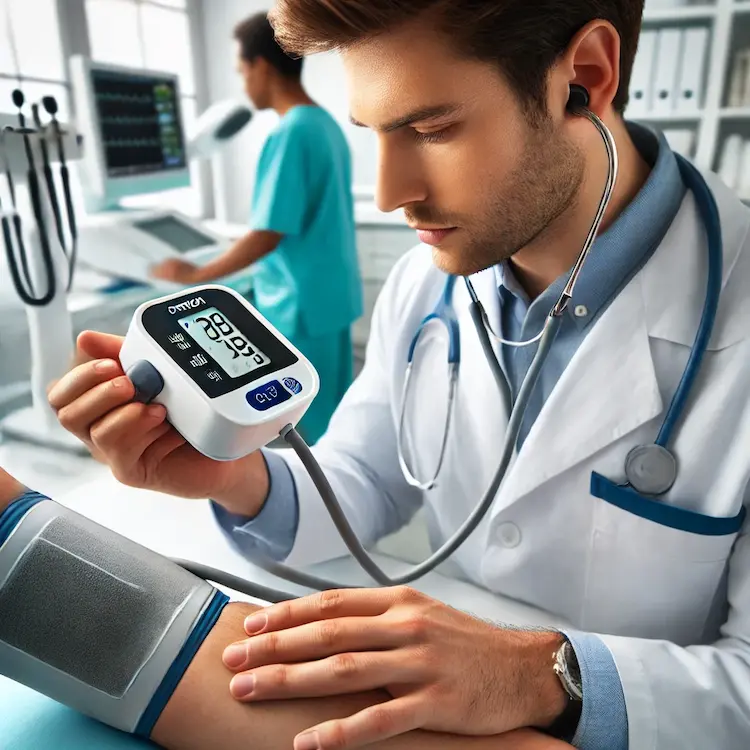Blood pressure monitoring is a crucial aspect of managing cardiovascular health, especially for individuals with hypertension or those at risk of heart disease. The market offers several digital blood pressure monitors, but Omron stands out as one of the most trusted brands. Among its wrist-based models, Omron RS3 vs Omron RS7 is a common comparison, as both are popular choices for home monitoring.
Both devices provide accurate blood pressure readings and offer convenience for long-term tracking, but they differ in features, technology, and ease of use. In this article, we compare the Omron RS3 vs Omron RS7 to determine which is better for long-term blood pressure monitoring, examining their accuracy, usability, additional features, and overall value.
High blood pressure (hypertension) is a silent killer, often showing no symptoms until it leads to severe complications such as heart attacks, strokes, and kidney disease. According to the World Health Organization (WHO), an estimated 1.28 billion adults worldwide suffer from hypertension, yet nearly half of them are unaware of their condition.
Long-term monitoring helps individuals:
Wrist-based monitors, such as the Omron RS3 and RS7, offer convenience and accessibility, making them popular for at-home monitoring.

| Feature | Omron RS3 | Omron RS7 |
|---|---|---|
| Measurement Method | Oscillometric | Oscillometric |
| IntelliSense Technology | Yes | Yes |
| Positioning Sensor | No | Yes |
| Advanced Accuracy Algorithm | No | Yes |
Both models use oscillometric measurement, a clinically validated technique for blood pressure monitoring. However, the Omron RS7 features a positioning sensor, ensuring the device is correctly placed for accurate readings. It also includes an advanced accuracy algorithm, reducing variability in results.
Winner: Omron RS7 (due to improved precision and reliability).
| Feature | Omron RS3 | Omron RS7 |
|---|---|---|
| Cuff Fit (Wrist Circumference) | 13.5–21.5 cm | 13.5–21.5 cm |
| Display Size | Standard | Large, high-contrast OLED |
| One-Touch Operation | Yes | Yes |
| Silent Inflation | No | Yes |
Both models feature one-touch operation, making them simple to use. However, the Omron RS7 has a larger, high-contrast OLED display, making readings easier to read, especially for elderly users. Additionally, it has a silent inflation feature, ensuring discreet operation.
Winner: Omron RS7 (better display and silent functionality).
| Feature | Omron RS3 | Omron RS7 |
|---|---|---|
| Bluetooth Connectivity | No | Yes |
| Mobile App Support | No | Yes (Omron Connect) |
| Memory Storage | 60 readings | 100 readings |
| Multi-User Mode | No | Yes |
The Omron RS7 is compatible with Omron Connect, allowing users to sync their readings with a smartphone for better tracking and analysis. It also offers 100 memory slots, compared to 60 in the RS3.
Winner: Omron RS7 (better tracking and digital integration).
| Feature | Omron RS3 | Omron RS7 |
|---|---|---|
| Battery Type | 2 x AAA | 2 x AAA |
| Battery Life | ~300 readings | ~300 readings |
| Auto Power Off | Yes | Yes |
Both devices offer similar battery life, making them energy-efficient. There’s no significant difference in this aspect.
Winner: Tie.
| Feature | Omron RS3 | Omron RS7 |
|---|---|---|
| Average Price | $50-$70 | $90-$120 |
| Value for Money | Good | Excellent (for advanced users) |
The Omron RS3 is a budget-friendly option for users who need basic blood pressure monitoring. However, the Omron RS7 offers premium features, making it a better investment for long-term monitoring.
Winner: Omron RS3 (for budget-conscious users) and Omron RS7 (for feature-rich experience).
If you want a future-proof blood pressure monitor with advanced features, the Omron RS7 is the best choice. However, for users who prioritize affordability without smart tracking, the Omron RS3 remains a reliable option.
